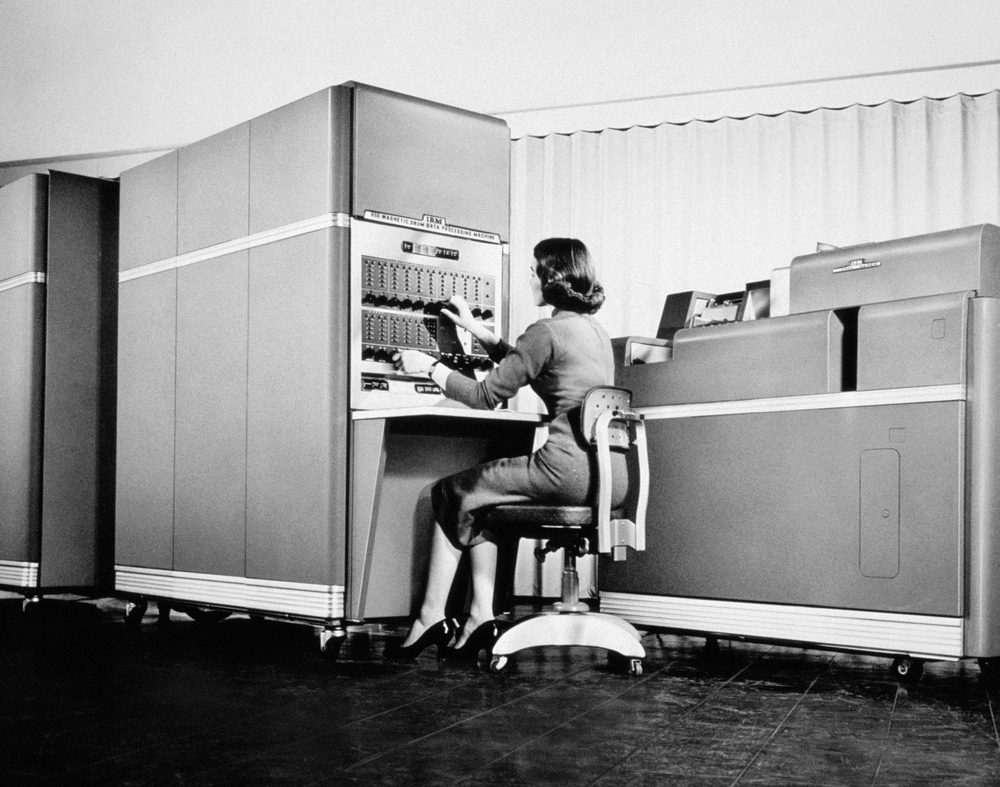On April 15th, 2019, Notre Dame stood in flames. The entire cathedral, built over the span of two hundred years, from 1163 to 1345, came close to collapse. An ambitious reconstruction plan was commenced by President Emmanuel Macron. “We haven’t done anything like this before,” one worker said.
Defeating the mainframe with a modular approach to IT-modernisation
It is time to give “big irons” a new run for their money.
Looking at headlines in flashy tech newspapers, our world might seem new. As always, appearances betray.
The shock of the old
High-tech spending reached an all-time high before the pandemic.
In The Shock of the Old (2006), scholar David Edgerton argues that rapid advancements in innovation overshadow the sheer oldness of our world.
»U2 spyplanes are still spying, B52s are still bombing, and the KC-135 are still refueling US jet fighters«, Edgerton notes. More down to earth, the QWERTY keyboard, developed in 1868, is still in use, despite being an inferior way to type.
Many things persist simply because they have existed for a long time. Within tech, the old mainframe reigns supreme.
Big iron
The Harvard Mark ‘big iron’ was the first of its kind. It was conceived in 1930, weighed 5 tons, and filled an entire room.
The bulky machine went out of use in 1959. A second run of mainframes was produced in the 60’s, 70’s, and 80’s which have proved harder to get rid of.
92 of the world’s top 100 banks, 23 of the 25 top airlines, 10 of the world’s top 10 insurers, and 71 percent of Fortune 500 companies still use them – alongside ERP systems.
Beneath headlines of new tech, a whole ecology of outdated iron appears, which is both difficult to update, insecure and costly to maintain.
And every business knows it.
Press play to watch our video
The fragile mainframe & the persistence of the old
»Of the estimated $35 trillion spent on IT products« and services between 2010 and 2020, about three-quarters went toward operating and maintaining existing IT systems. 2.5 trillion was spent on trying to replace legacy IT systems, a third of which was spent on failed replacement efforts.
The starkest example happened during the Corona pandemic.
A surge in unemployment claims and emergency loans forced age-old account systems to be updated.
The problem was that mainframes ran on an ancient programming language called Cobol. Hardly anybody knew how to use it.
The pandemic created a shock of the old of its own in the world of mainframes and ERP systems.
A world of components and a new path to modernisation
On the surface, the shock looked like the fire at Notre Dame.
Beneath the surface, nobody cared about the beauty or cultural value of mainframes. What they cared about was function.
In other words: we have been giving heart massages to mainframes for long enough.
We need a novel approach.
Within architecture, modular housing and circular architecture arose to meet the rapidly rising demand for new functional housing – updatable, personalised, and efficient.
Tech modernisation never saw a similar evolution.

Mainframe - IBM Magnetic Drum Data Processing Machine

Like modular housing, tech could be built with reusable components.
AMPLIO was built by Netcompany to address this need – to give “big irons” a new run for their money by thinking modularly.
Modernising the entire Danish welfare system
AMPLIO played an instrumental role in modernising the entire Danish welfare system – from health insurance to social benefits, and auditing authorities, using this modular approach.
All these systems ran on old mainframes.
After modernisation, maintenance costs were lowered by 30 %, and the systems were in full compliance with hundreds of pages of continually shifting law documents.
Today, the system pays out more than 30 billion EUR a year, processes close to a million applications, and supports thousands of caseworkers.
The system has no lock-in and no IP – and is the first of its kind.
What is AMPLIO?
An industry agnostic platform for regulated case management and process automation.
Suited for highly compliant and complex environments.
Legacy- and IP-free.
Has no vendor lock-in.
Fully customisable.
Integrates easily to a myriad of data sources.
Builds on a proven library of software components


